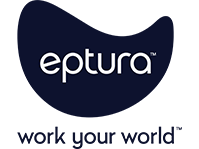In episode 359, host Mike Petrusky speaks with Daniel Castner, AIA, LEED AP, and principal and director of the life science practice at Mancini Duffy. Castner’s work includes workplace strategy with a focus on research labs, medical space, and places and projects where he can help with AEC coordination. They talk about Castner’s experiences helping the IFMA community, the importance of client relationships, and the use of technology in workplace strategy. They then explore design trends and emphasize the need to be flexible and intentional when delivering spaces that meet the needs of the workforce. Castner shares insights into how change management has evolved to focus more on the employee experience and wellbeing, rather than just specific projects.
Agenda
- Importance of client relationships and the use of technology in workplace design
- Changes in change management and the focus on employee experience
- Role of facility managers and corporate real estate leaders in the future
- Advice for listeners on creating effective workplaces post-pandemic
What you need to know: Workplace takeaways
Takeaway 1: The role of facility management and corporate real estate leaders is evolving to focus more on strategic, long-term planning and employee well-being
“It used to be the discussion was more about is it the right temperature? There’s a water leak, how can we respond to something, you know, in a reactive way,” Castner says. “But now I think things are shifting and there’s much more big picture focus on whether it’s recruiting and retention or sustainability and providing a space that considers, you know, the environment and the world around us.”
There’s also a new focus on designing spaces that are not only functional but also enhance the workplace experience. “In the case of me working in life science, I think a lot about wellness and how a company may be coming up with a cure for cancer, but they also need to come up with a workplace that responds to keeping their employees healthy at the same time,” he says. This includes elements like biophilia, good lighting, and acoustic comfort, which are crucial for maintaining a positive outlook and driving happiness among employees.
Castner also stresses the need for flexibility in design to accommodate changing trends and technologies. “A construction project may take two, three, or four years. When you and I talked with Michelle back in episode 51, that project we talked about back in 2019 took about 4 years to build, and a lot of the strategy and a lot of the discussion points we talked about in that podcast in 2019… those trends continue to shift and pivot,” Kastner explains.
The industry needs to focus on “being able to design in such a way that it’s a little more timeless and a little less focused on the superficial things that are trends and trying to find those really core elements of strategy, whether it’s through a workplace that’s responding in a very flexible way, thinking about prop tech.”
Takeaway 2: Change management in the workplace now requires a focus on the employee experience and continuous learning from past mistakes
“I think change management itself has evolved over the last five or six years. There’s just so much more focus now on the employee experience,” Castner says.
He also shares insights into the importance of learning from mistakes and adapting to change. “I’m interested to hear people’s mistakes and how they weren’t perfect out of the gate but tweaked things and made them work along the way and continued to learn lessons because nothing, nothing is static. Everything keeps pivoting whether it’s the design of the environment or the drive that people have to work,” Castner says. “Those passions are always there, but along the way you will make mistakes and so it’s always for me fascinating to see how people respond to mistakes, and you have a meaningful discussion with your team to learn and pivot.”
Transparency and collaboration are especially important when things don’t go according to plan, he says. “If you work together and have an understanding that we’ll be better because of it in the long run, and we’ll learn something,” he says.
Takeaway 3: Technology, such as digital twins and analytics, can help facility managers and corporate real estate leaders understand and meet the needs of their workforce more effectively
Technology plays a crucial role in helping facility managers and corporate real estate leaders understand and meet the needs of their workforce. “The use of digital twins and analytics, I think that’s helpful in understanding your workforce and what they’re looking for. Some of the things they’ll say and some of the things they won’t say, and you’ll have to respond from their actions,” Kastner explains.
Technology can provide valuable insights into a company’s culture and the effectiveness of their office space. “That really helps understand and get a tap into the culture of the company and see where the supply and demand of that office is working and where it’s not working,” he says. “The data doesn’t lie, right? We humans can say one thing on a survey and then behave in a completely different way.”
Workplace management insights
- The life science sector is a significant part of workplace design, often comprising 40-70% of office space.
- Architects are increasingly using technology, such as digital twins and analytics, to better understand and meet the needs of their clients and employees.
- Change management has shifted from project-specific efforts to a broader focus on company culture and employee well-being.
- Facility managers and corporate real estate leaders need to balance amenities with functional, well-designed workspaces that support productivity and mental health.
- Flexibility and agility in workplace design are important for adapting to ongoing trends and changes.
Take the Eptura™ Podcast Survey for your chance to win swag and then do a deep dive into more workplace insights by exploring all Workplace Innovator podcast episodes.





